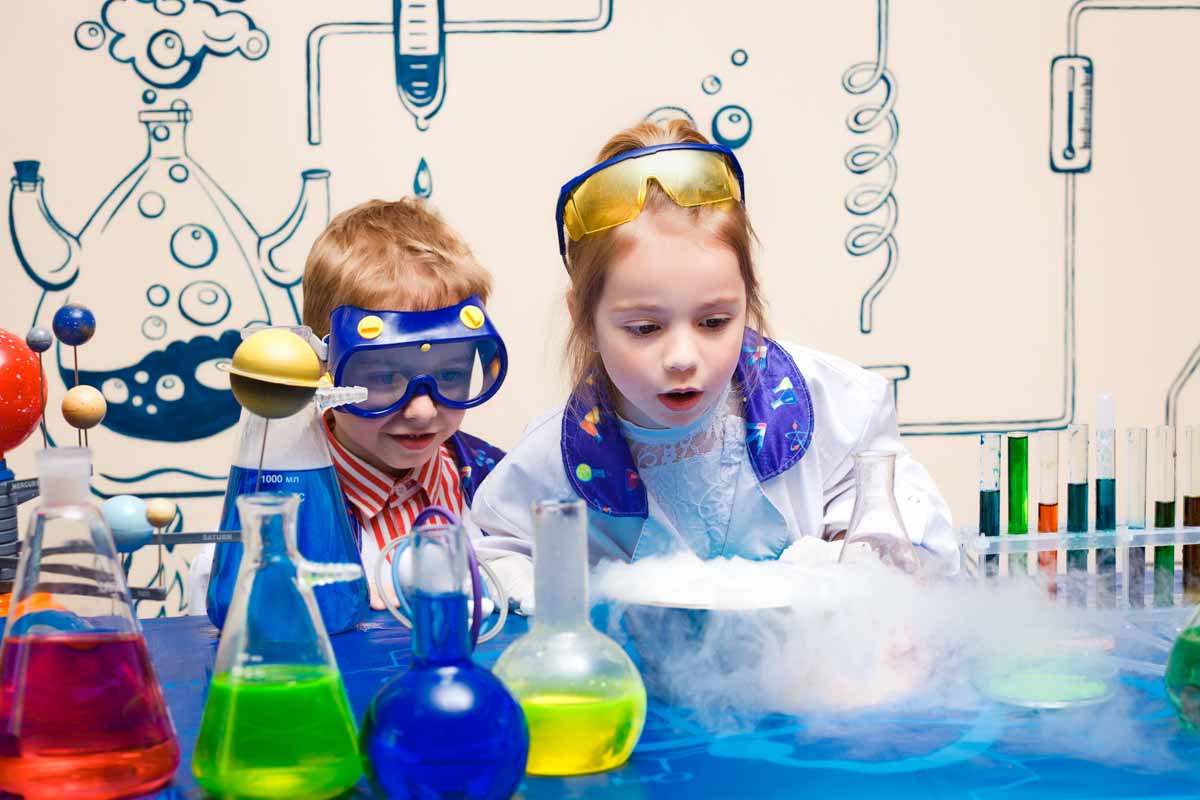How Do You Get Young Children Interested In Science?
Science experiments for children are an excellent way to get the younger ones involved in the mysteries of Science.
For small children, Science can seem tedious or too complicated, but if we can present them with exciting and surprising experiments that get their attention, they will love it!
As the main objective is to maintain their concentration, scientific experiments for the youngest members of the family must be attractive and visual. In addition, the majority of experiments can be done with objects from around the house or from any convenience store, this should avoid any great expense or bulky objects.
Have we mentioned yet that these types of scientific games can also become addictive for adults? Don’t be surprised if you also become engaged in Science and that you achieve the same enjoyment whilst helping your children with their experiments. This is precisely the objective, understanding that Science is fun. For everyone.
A quick search on the internet will help you find all different types of experiments for children which will help you get them interested in Science. Today we want to save you time and here are 10 of the best experiments for you and children.
Get your glasses, your notebook, your lab coats, and GET TO WORK!
10 Fantastic Experiments To Do With Children
1. The Lava Lamp
This experiment is very simple and suitable for all ages. Firstly, fill a measuring glass with 3/4 of frying oil and with 1/4 of water. In a few seconds, the two liquids will separate, with the water settling underneath the less dense oil. Now, pour drops of vegetable coloring and ideally a tablet that fizzes. Small bubbles of colors will ascend to the surface whilst the effects of the tablet last. Just like a real lava lamp. When the tablet stops fizzing, you can always add another.
2. The Bottle That Glows
Purchase some glow in the dark paint sticks (available in a party and fancy dress shops), wrap them in a colored plastic paper, and put them into a glass bottle. Move the sticks around carefully inside of the bottle until enough of the paint from the sticks has covered the paper. Turn off the light and… Surprise!
3. Home-Made Stalagmites
Put a bottle of mineral water (tap water might not work) into the freezer for approximately two hours. When you remove the bottle, you will notice that the water is very cold, but not yet frozen. Open the bottle and gently pour water into the top, making sure that it is in exactly the same place. Now see how a small ice tower begins to form. Amazing!
4. The Banknote That Will Not Burn
Take a banknote (the smallest one possible, just in case…) and place it into a glass of water. Take it out and try to set it alight with a lighter…nothing right? You will notice that the water prevents the note from catching fire. To make it more interesting, put the note back into the water and then into a glass full of ethanol (alcohol from a chemist). Remove the note using tweezers and light it again. The ethanol will burn, but the layer of water will protect the note until all of the alcohol burns off.
5. The Popcorn Monster
This is probably the easiest experiment for children, buy a bar of soap and put it in the microwave for two minutes on maximum. You will notice an incredible “monster” beginning to form. Be careful when removing the soap from the giant popcorn that has formed will be very hot. The best part is that when it has cooled down, it can be molded into different shapes using your imagination.
6. The Rubber Submarine
Buy three water balloons and place a screw nut around the tops, making sure that the nut fully covers the openings of the balloons. Fill up a bottle of water and push the “submarine” inside. Now, let physics take over! If you squeeze the bottom of the bottle, the ship will submerge. When you let go, it will resurface. Amazing right?
7. Gummy Bears
Buy a packet of gummy bears (you only need 4 for the experiment, but you can eat the rest!) and put a gummy bear into a glass of water, another into a glass of vinegar, another one into a glass of saltwater and the last one into a glass of water with baking soda. Leave them overnight and check the results the next morning. We know, poor bears!
8. A plant inside a box
An excellent way to explain the life cycle of plants to children is to look after one. Take a lentil or a bean and put it into a transparent box with a bit of soil. If you find a place that’s well lit, and you don’t forget to add water, within a week you will have a plant!
9. The balloon that inflates itself
Fill up a plastic bottle with 3/4 of vinegar. Then, fill up half a balloon with baking soda and attach it to the top of the bottle. As the baking soda falls into the vinegar, the balloon will begin to inflate itself. Be careful though, as the balloon will eventually explode if not removed.
10. The oil that floats
Fill a shot glass with olive oil and place it into a larger glass. Then, fill the larger glass with 96% alcohol. Next, use a funnel to slowly add water into the glass, until the surface of the oil begins to curve. The olive oil, denser than the water, but not as dense as the alcohol will float between the two liquids.
You might also like: Best Stories for Primary School Children





